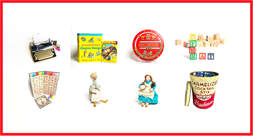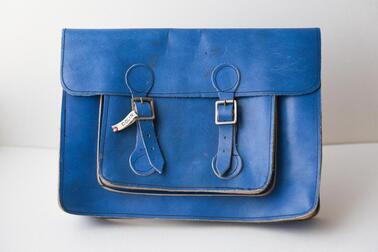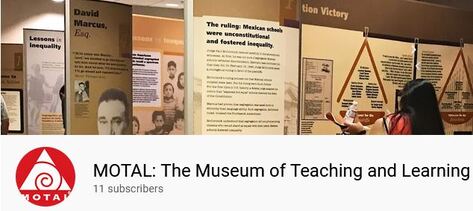|
We are building a virtual exhibition of our artifact collection
August Artifact of the Month: Bubie's 1960s School Bag If You'd Like to Donate, This is
Our Annual Membership Drive Through the years, The Museum of Teaching and Learning has been fortunate to receive gifts from individuals just like you. We are deeply grateful for your faith in our work and for your giving. As a charitable nonprofit we serve the public good through education and enrichment. We inspire thoughtful conversations and build understandings through our various presentations.
We Educate People About Education
Our impact: Online readers and fans have now multiplied. Our publications are being shared and complimented. Our podcast series has eight episodes “in the can,” with more to come. We continue to receive honors and grants. Research and writing help our artifacts’ stories “come alive” for audiences across the country. Also, MOTAL has economic influence within our community; we pay for a large array of products and vendors; a vast majority of contributions support our charitable mission.
As a volunteer-driven organization, MOTAL depends on donations to continue its programs and enhance the community. MOTAL is grateful for generous support received in the past. Nevertheless, we must continue to pay bills for necessary services, many of which are out of public view such as storage, insurance policies, technology, and data platforms. If you'd like to donate, this (our annual membership drive) is a great opportunity to do so. You may choose any one of many levels of support, based on your personal preference. Our membership levels and how to donate are explained on our Membership Page HERE. Most gratefully, Greta Nagel, PhD, President and CEO On behalf of the MOTAL Board officers Eva Postma, Vice President Mary Deming, PhD, Secretary Cheryl Stewart, MS, Treasurer |
Here is a direct Link to our NEW MOTAL YouTube Channel :
MOTAL- The Museum of Teaching and Learning While you are there, please click on the SUBSCRIBE button which is FREE! YouTube will reward MOTAL with our very
own URL when we have 100 subscribers. Because of difficulties of the past year, MOTAL altered our approaches. We accomplished some very good things:
MOTAL has many projects scheduled for implementation during this next fiscal year:
Like, Follow, and Subscribe! |
|
Copyright © 2011–2023 Museum of Teaching and Learning.
All rights reserved. Disclosures. |
1111 E. Commonwealth, Unit C, Fullerton, CA 92831, USA
|











